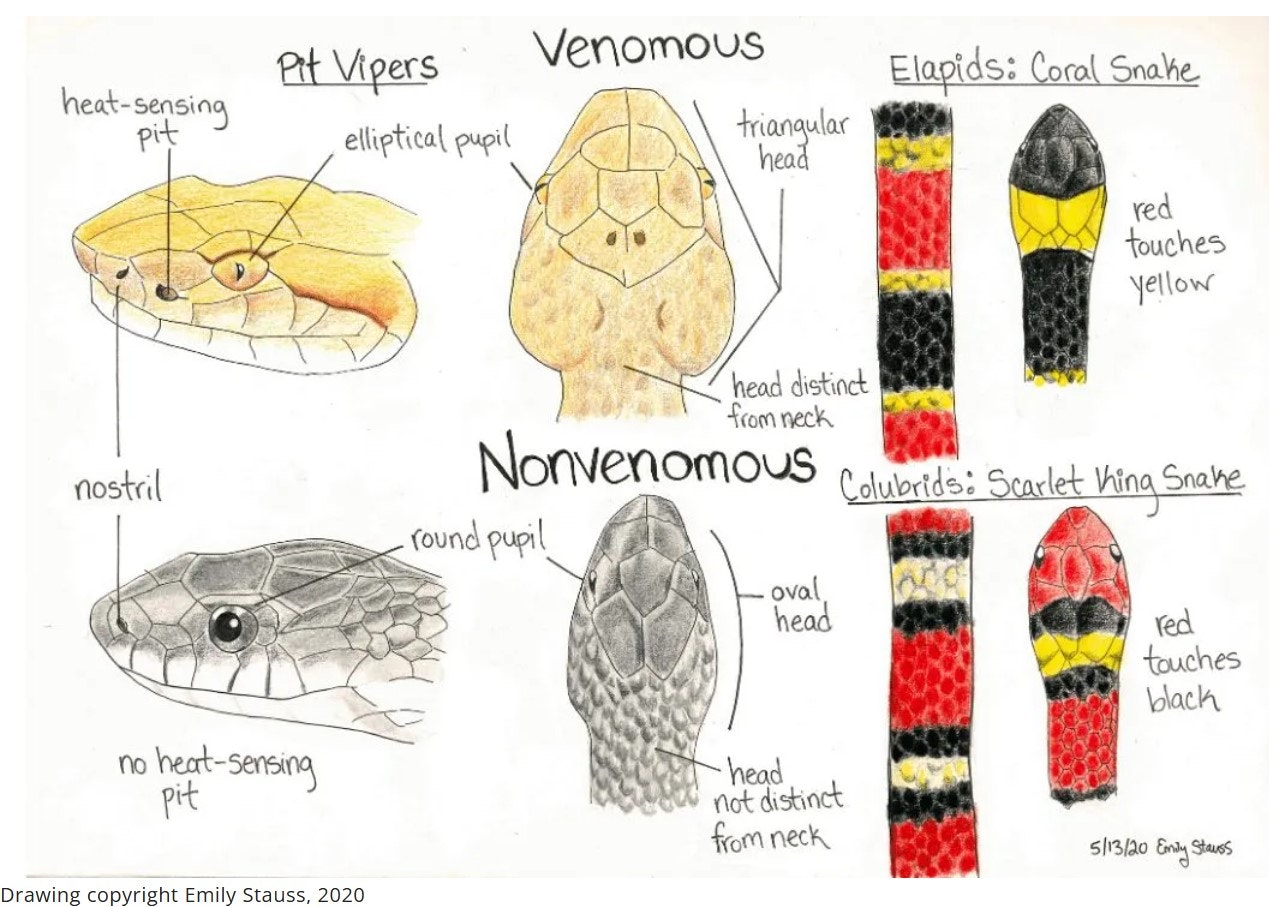Reptile Identification- How to Keep Everyone Safe
Reptiles have a mixed reputation; some people admire them, while others fear them. However, these incredible animals deserve protection and support to thrive. Two types of reptiles that are often misunderstood and mistreated are turtles and snakes. Let’s discuss how to keep both them and ourselves safe.
Turtles vs. Tortoises
Did you know that tortoises are a type of turtle, but not all turtles are tortoises? All tortoises are, in fact, turtles—that is, they belong to the order Testudines or Chelonia, reptiles having bodies encased in a bony shell—but not all turtles are tortoises. Most people use the term "turtle" to reference any reptile with a shell on its back. Still, there are several differences between these two unique creatures.

The most important thing to remember about tortoises is that they are exclusively land creatures-they do not swim. One way to further distinguish tortoises from other turtles is to look for certain anatomical features. Tortoises are easily recognized because they all share a unique hind-limb anatomy made up of elephantine (or columnar) hind limbs and hind feet. Their forelimbs are not flipper-like, and their hind feet are not webbed. Each digit in their forefeet and hind feet contains two or fewer phalanges.
If you find a turtle, examine its legs and shell. If the back feet are webbed and the forefeet are flipper-like, they are a turtle and can swim. They can be placed near a water body to find their way back into the water. If their forefeet are stumpy with claws and their hind feet are similarly stumpy with claws, then it is likely a tortoise. The shells of a tortoise are mostly rounded or dome-like. Shells of water turtles are more flattened and streamlined.

Do NOT place tortoises in a water body. They CAN NOT swim and will drown. Please put them in a safe area on land, generally pointing in the direction they were heading.
Snakes: Venomous vs. Non-Venomous
Ophidiophobia, or the fear of snakes, is a common specific phobia characterized by an intense, irrational fear of snakes. While some people fear them, snakes are beneficial to the environment. Snakes play a vital role in maintaining ecological balance by controlling populations of rodents, insects, and other small animals, which can be pests. They also serve as a food source for other animals, contributing to the overall biodiversity of an ecosystem.
Unfortunately, there is no simple way to distinguish between a venomous snake and a non-venomous snake. The best possible advice you can follow is that any snake that cannot be positively identified as harmless should not be handled. Many people believe that all snakes with triangular-shaped heads are potentially venomous. Although all pit vipers (rattlesnakes, copperheads, and cottonmouths) in the eastern United States have broad, triangular heads, so do some non-venomous species, such as water snakes (Nerodia). In addition, a nontriangular head does not signify the absence of venom: the two species of coral snakes in the United States, both venomous, have slender heads with little distinction between head and neck. Another over-generalization is that venomous snakes have elliptical pupils, whereas all harmless snakes have round pupils; however, venomous coral snakes also have round pupils. Unfortunately, there is no single rule that separates all venomous species from all the harmless ones.

There is no foolproof way to prevent snakes from entering one's property. Some products are sold with claims of deterring snakes; however, the effectiveness of these products remains to be proven. The repellent products that are most commonly advertised contain either sulfur or naphthalene (mothballs). However, the amount of product required to be effective against snakes would make the treated area intolerable for almost everything else, including people.
There are other ways to encourage snakes to move to different habitats. Remove brush piles, logs, bushes, or any other objects that could give snakes cover to hide under. If you have a pond or water feature in your yard, remove any fish or other animals that could be a safe and consistent food source for them. If you find an unwanted snake, the most effective way to get it to move along is to spray it with a hose. This keeps both you and the snake safe. Again, do not try to kill it; they are beneficial to the environment. While you may be afraid of them, snakes generally leave people alone unless they are harassed. Just walk the other way, walk around it and leave it alone.
